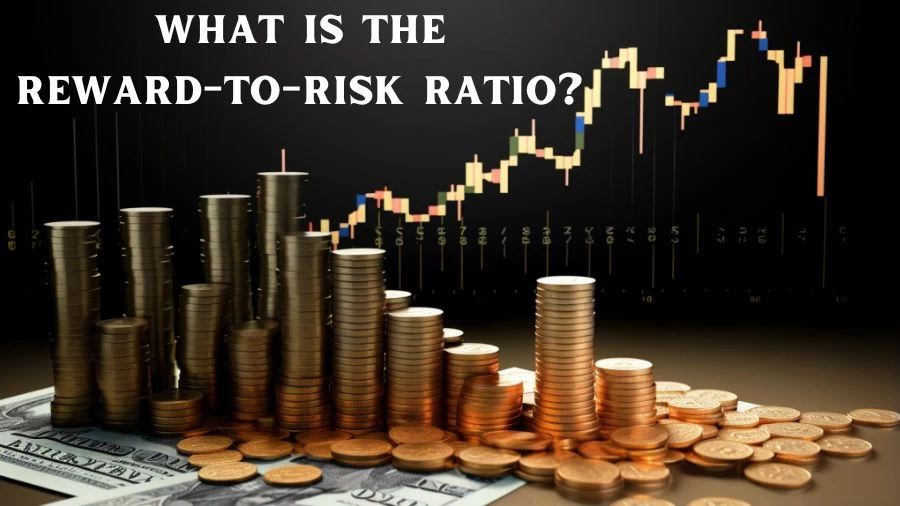
What is the Reward-to-Risk Ratio? How to Calculate Risk Reward Ratio?
The Reward-to-Risk Ratio evaluates potential trade profitability by dividing potential reward by potential risk, aiding traders in managing risk and making informed decisions
by Sangamithra
Published Aug 30, 2023 | Updated Aug 30, 2023 | 📖 7 min read
What is the Reward-to-Risk Ratio?
The Reward-to-Risk Ratio is a metric used in investing and trading to assess the potential profitability of a trade compared to the potential loss. It is calculated by dividing the potential reward of a trade by its potential risk. A ratio greater than 1 suggests that the potential reward outweighs the potential risk, making the trade appear more favorable.
On the other hand, a ratio below 1 indicates that the potential risk is greater than the expected reward, which could signal a riskier proposition. This ratio helps investors and traders make informed decisions while considering both profit potential and risk management.
How to Calculate Risk Reward Ratio?
The Risk/Reward Ratio is a crucial concept in trading, indicating the potential profit versus potential loss of an investment. By calculating this ratio, traders can make informed decisions about their trades while managing risk effectively.
Determine Potential Loss: Identify the amount you stand to lose if the trade doesn't go as planned. This is usually the difference between your entry price and your stop-loss price.
Calculate Potential Gain: Determine the potential profit you could make if the trade goes in your favor. This is typically the difference between your target price and your entry price.
Divide Loss by Gain: Divide the potential loss by the potential gain to get the Risk/Reward Ratio. The formula is Risk/Reward Ratio = Potential Loss / Potential Gain.
Interpret the Ratio: A ratio greater than 1 indicates the potential reward is higher than the risk, which is generally preferred. For example, a ratio of 2:1 means you're aiming for twice the profit compared to the potential loss.
Adjust and Optimize: Depending on your risk tolerance and trading strategy, you can adjust your stop-loss and target levels to achieve a more favorable risk/reward balance.
Remember that while the Risk/Reward Ratio is a useful tool, it's not the only factor to consider when making trading decisions. Always consider your overall strategy, market conditions, and individual risk tolerance.
Risk and Reward Examples
Here are some examples of how the risk/reward ratio works:
Stock Investment Example:
An individual is contemplating an investment in Company XYZ's stock, currently valued at $50 per share. The individual anticipates a potential rise to $70 per share and establishes a stop-loss at $40 to mitigate potential losses. The breakdown is as follows:
Potential profit: $70 - $50 = $20 per share
Potential loss: $50 - $40 = $10 per share
Risk/reward ratio: $10 / $20 = 0.50
This implies that for each dollar at risk, the individual has the possibility to gain $2, presenting a favorable risk/reward ratio.
Forex Trading Example:
In this instance, a forex trader is evaluating a currency pair with a projected movement from 1.1000 to 1.1200. The trader sets a stop-loss at 1.0900. The breakdown is as follows:
Potential profit: 1.1200 - 1.1000 = 0.0200 (200 pips)
Potential loss: 1.1000 - 1.0900 = 0.0100 (100 pips)
Risk/reward ratio: 100 pips / 200 pips = 0.50
Similar to the previous example, the forex trade exhibits a risk/reward ratio of 0.50.
Cryptocurrency Example:
Consider an individual exploring a cryptocurrency investment where the goal is a price increase from $10,000 to $15,000. A stop-loss is set at $9,500. The calculations unfold as follows:
Potential profit: $15,000 - $10,000 = $5,000
Potential loss: $10,000 - $9,500 = $500
Risk/reward ratio: $500 / $5,000 = 0.10
In this scenario, the risk/reward ratio is lower, signifying a potential risk of $1 for a potential gain of $10.
Real Estate Investment Example:
In this scenario, an individual is considering a real estate investment involving a property purchase at $200,000. The individual estimates a resale value of $300,000 after renovations. However, potential unexpected costs during renovations are a concern. A maximum loss limit of $220,000 is established. The breakdown is as follows:
Potential profit: $300,000 - $200,000 = $100,000
Potential loss: $220,000 - $200,000 = $20,000
Risk/reward ratio: $20,000 / $100,000 = 0.20
This case presents a risk/reward ratio of 0.20, indicating a relatively higher risk for the potential reward.
It is crucial to remember that while the risk/reward ratio serves as a valuable decision-making tool, other factors such as risk tolerance, market conditions, and success probability should also be taken into account. Moreover, this ratio does not encompass the probability of outcomes, requiring additional research and analysis.
What is a Good Risk-to-Reward Ratio for Day Trading?
For day trading, a good risk-to-reward ratio often hovers around 1:3. This translates to seeking three units of potential gain for every unit of risk undertaken. Such a ratio aims to maintain a proportionate balance between potential profits and potential losses. Market strategists commonly opt for this ratio as it helps cushion against losses while providing an opportunity for substantial returns.
Day traders can utilize risk management techniques like stop-loss orders and derivatives such as put options to align with this ratio effectively. However, it's important to acknowledge that individual trading styles and risk tolerances can influence the optimal ratio. Therefore, traders should fine-tune their risk-to-reward approach to match their specific strategies and risk thresholds.
How Does the Risk/Reward Ratio Function?
The risk/reward ratio operates as a pivotal tool for investors and traders in evaluating potential investments. Often aiming for an optimal ratio of 1:3, investors calculate this ratio by comparing the projected returns to the potential risk involved. Stop-loss orders and derivatives, such as put options, are utilized to manage this ratio more directly.
This ratio's applicability extends to various trading strategies, each requiring experimentation to pinpoint the ideal ratio. While calculating the ratio, the prospective loss is set in the numerator, and the anticipated gain is in the denominator. Expected return can be assessed through historical projections, weighted future outcome probabilities, or models like the capital asset pricing model.
To determine potential loss, historical price data, standard deviations, fundamental analysis, and models like value-at-risk are employed. Ultimately, the risk/reward ratio aids investors in making informed decisions by weighing potential rewards against associated risks.
What Are Alternatives to the Risk/Reward Ratio?
The risk/reward ratio is just one tool among many that traders can use to assess investment opportunities. Day traders often consider another ratio: the win/loss ratio. This ratio indicates how many of an investor’s trades result in a profit compared to those that result in a loss. For instance, an investor with five profitable trades out of ten would have a win/loss ratio of 50%.
A higher win/loss ratio implies more risk tolerance for individual trades, assuming similar care in decision-making. Conversely, investors with lower win/loss ratios should focus on investments with lower risk/reward ratios to ensure that gains from successful trades outweigh losses from more frequent unsuccessful ones.
The risk/reward ratio, while simple to calculate, doesn't account for the likelihood of specific outcomes. It's important to combine it with other tools to consider factors like the probability of achieving gains or losses.
What Are the Risk/Reward Ratio's Advantages and Disadvantages?
Advantages of the Risk/Reward Ratio:
- Simplicity: The risk/reward ratio employs a straightforward formula, making it easy for traders to quickly assess potential trade viability.
- Risk Management: By quantifying the risk of an investment, the ratio assists traders in making informed decisions about entering trades.
Disadvantages of the Risk/Reward Ratio:
- Limited Accuracy: The ratio's reliance on predetermined profit targets and stop-loss levels may not account for rapid market price movements, leading to actual outcomes differing from theoretical predictions.
- Neglects Outcome Odds: The risk/reward ratio focuses solely on potential profit and loss, without considering the likelihood of each outcome occurring.
- Overlooks Stable Prices: The ratio doesn't accommodate scenarios where prices remain stable, which could be relevant for traders aiming to capitalize on short-term price plateaus.
Incorporating the risk/reward ratio into trading strategies can offer benefits such as ease of use and improved risk assessment. However, it's essential to recognize its limitations in accuracy and not solely rely on it for decision-making.
How is the Risk/Reward Ratio Used in Investing?
The risk/reward ratio is a crucial tool in investing, gauging potential profit against potential loss. By comparing an investment's potential losses to its possible gains, investors can quickly assess whether the investment is worth pursuing. This ratio is particularly favored by active traders, offering them a way to manage risk efficiently.
Calculating the risk/reward ratio involves dividing the potential loss by the potential profit. A ratio below 1 signifies higher potential reward than risk, while ratios above 1 indicate greater risk than reward. While the risk/reward ratio provides insight into an investment's basic potential, it doesn't account for the likelihood of achieving those outcomes. As a result, many investors use other tools to complement their analysis of investment opportunities.
What is the Reward-to-Risk Ratio - FAQs
1. What is the Reward-to-Risk Ratio?
The Reward-to-Risk Ratio is a metric used in trading to compare potential profits to potential losses, helping traders assess trade viability.
2. How do you calculate the Risk/Reward Ratio?
To calculate the Risk/Reward Ratio, divide the potential loss by the potential gain, aiding traders in managing risk and potential returns.
3. What's a good Risk-to-Reward Ratio for Day Trading?
A good Risk-to-Reward Ratio for day trading is often around 1:3, aiming for three units of potential gain for every unit of risk.
4. What's an alternative to the Risk/Reward Ratio?
An alternative ratio used by traders is the win/loss ratio, which indicates the proportion of profitable trades compared to losing ones.
5. What are the advantages of the Risk/Reward Ratio?
The Risk/Reward Ratio offers simplicity in assessing trades and helps manage risk, aiding in informed decision-making for traders.




